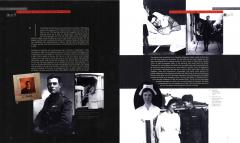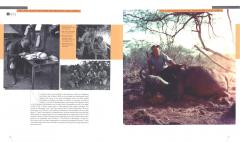A loving homage to one of America's greatest writers.
July 2, 2011, marks the 50th anniversary of the tragic death of Ernest Hemingway. The year will also see the release of two documentaries about the famed writer.
In this first-ever tribute to her grandfather, Mariel opens the family album to reveal all aspects of the man. More than 350 carefully selected photographs show a childhood filled with harbingers of the future -- the five-year-old fishing, the 16-year-old writing, the wounded soldier, the young groom -- and an adult life of success and failure -- journalist, serial husband, prize-winning author, big-game hunter, "Papa" Hemingway, foul-mouthed drinker, self-idealized hero.
A compelling 40,000-word narrative gives chronological details and adds fascinating context to the photos. What influenced Hemingway's writing? Who were the important figures in his life? Why was he compelled to write? Was he as confident as he presented himself to be?
Hemingway: A Life in Pictures surveys the touchstones of a celebrated life to reveal the character, dreams and disappointments of one of America's greatest writers.
Categorii:
Limba:
Engleza
Data publicarii:
2021
Editura:
Tip coperta:
Paperback
Nr. pagini:
207
ISBN:
9781554079469
Dimensiuni: l: 25cm | H: 28cm | 1.5cm | 1134g
Indisponibil
Preț valabil exclusiv online!
Împachetare cadou gratuită!
Transport gratuit peste 150 de lei.
Retur gratuit în 14 zile.
Ai întrebări? Contactează-ne!



